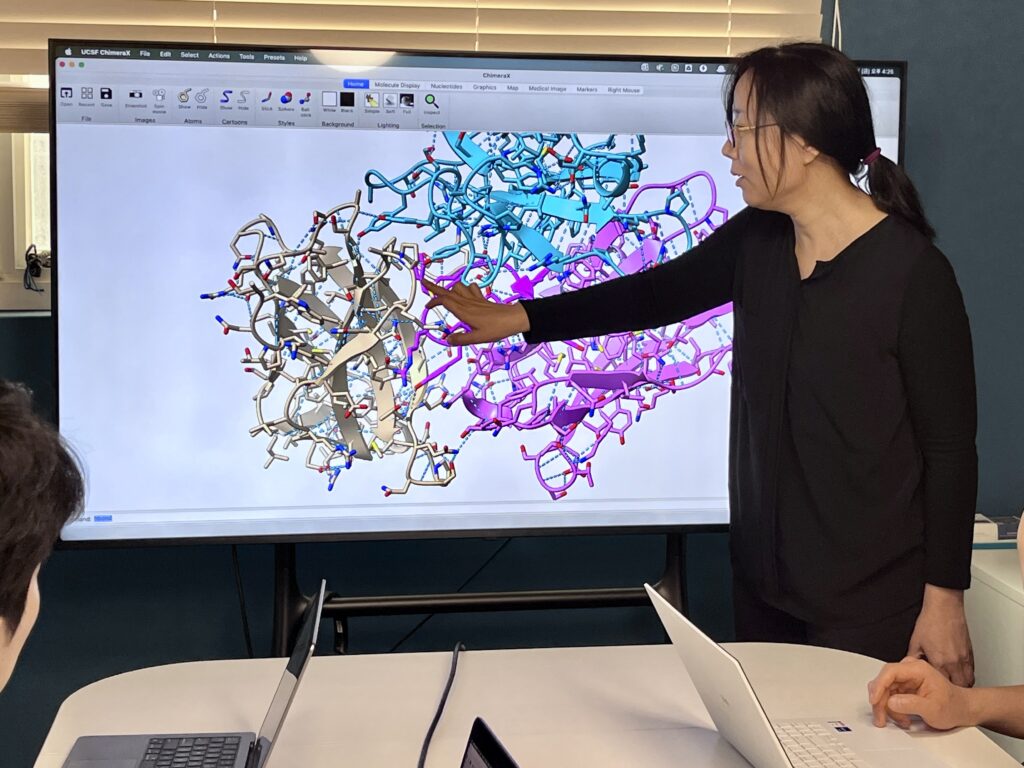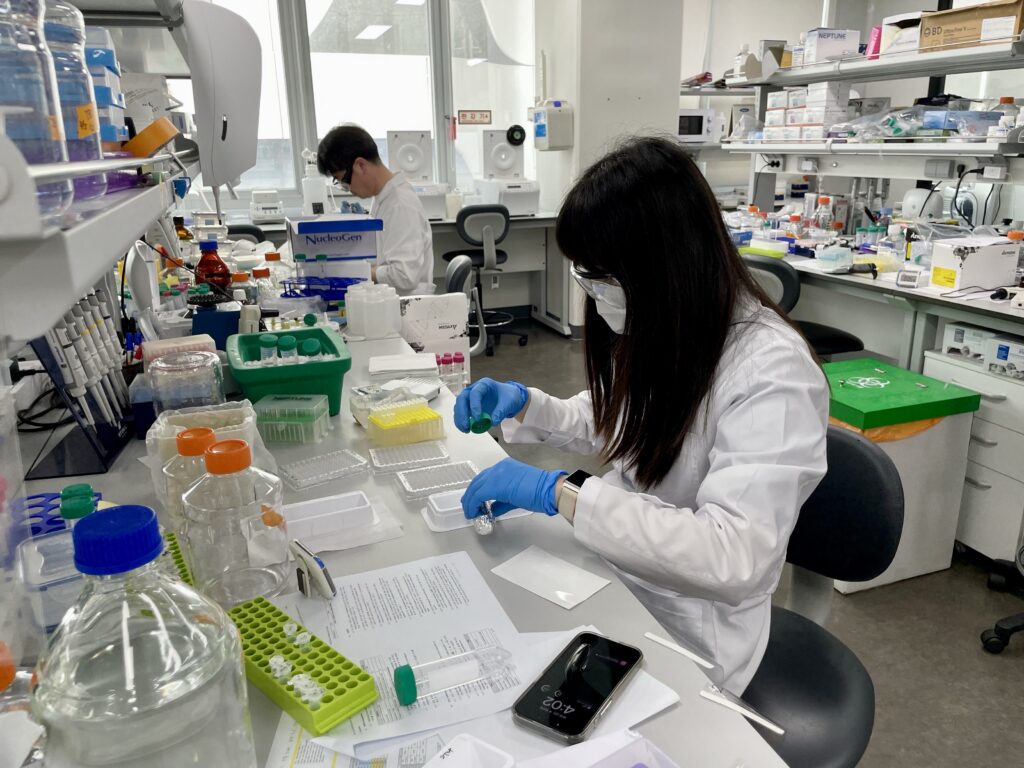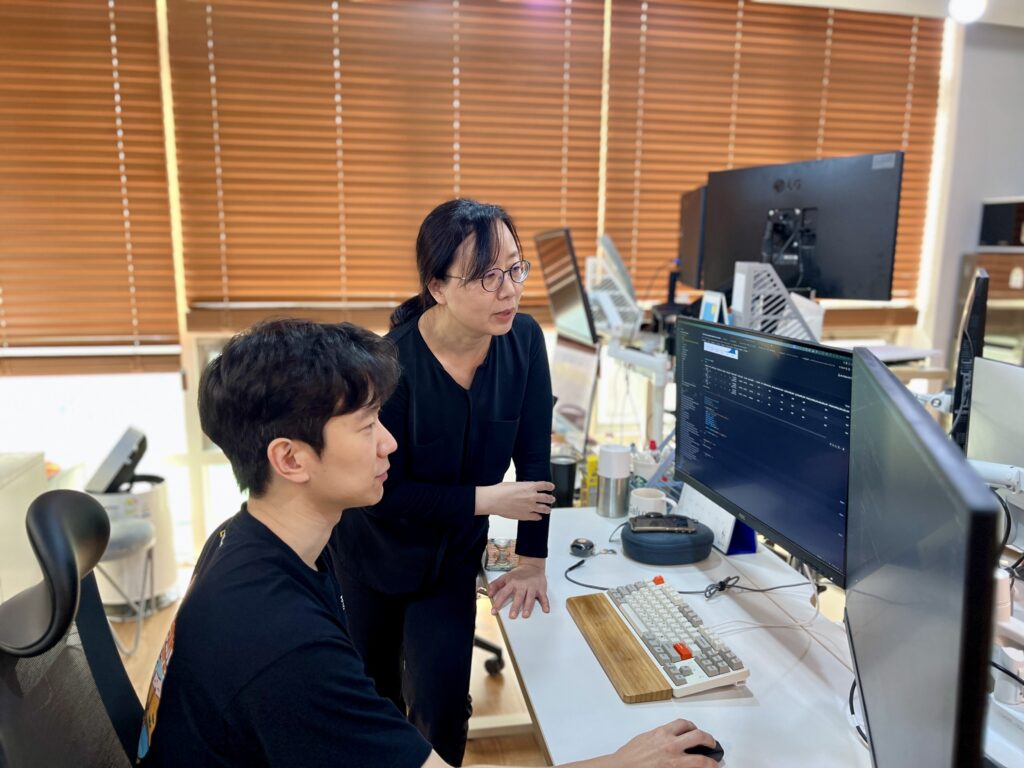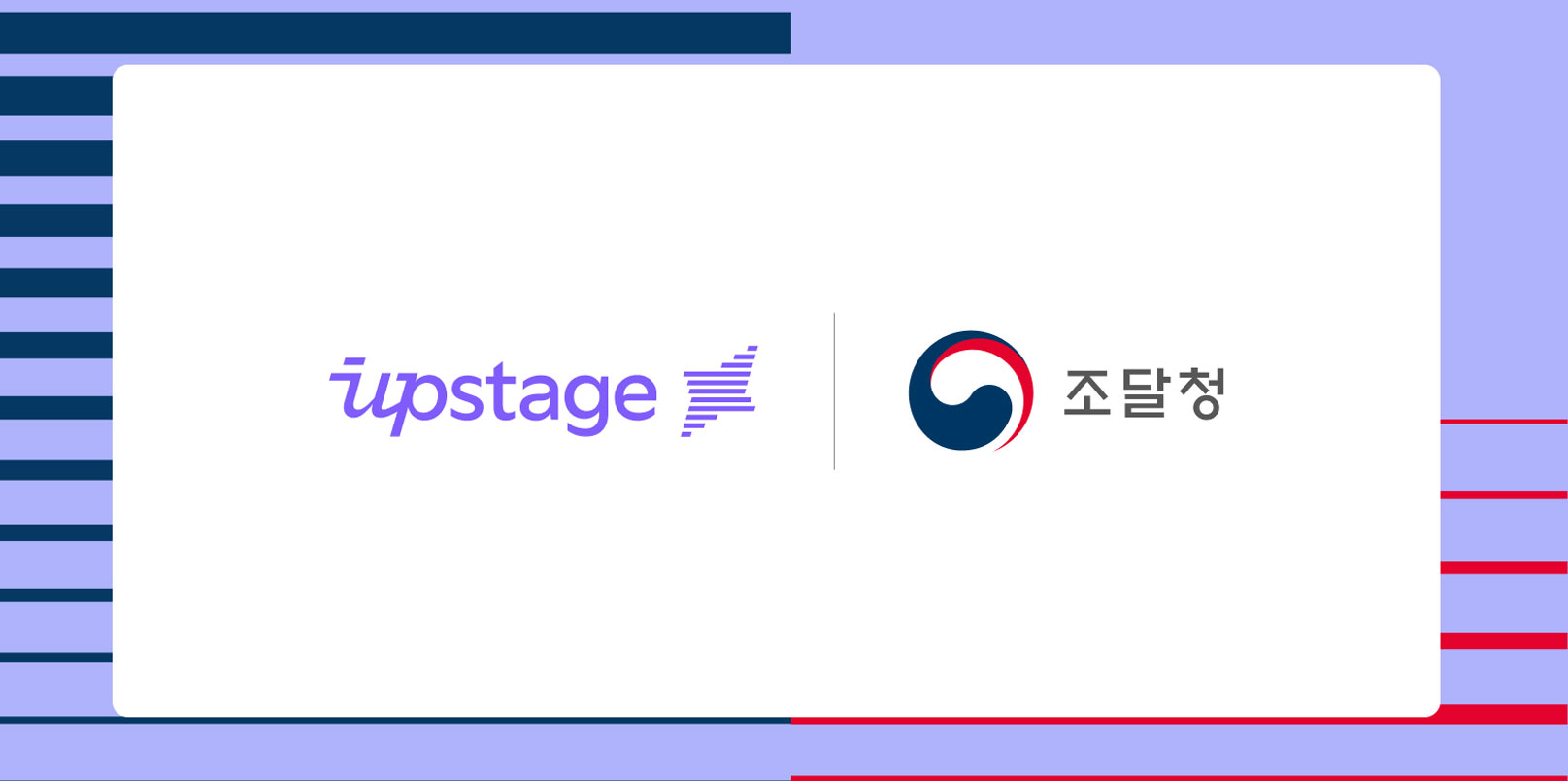Korean biotech startup Galux Inc. is making waves on the global stage with its groundbreaking AI-driven platform, GaluxDesign, designed to engineer novel therapeutic antibodies with unprecedented precision. In a recently published study, Galux demonstrated the power of its proprietary technology by successfully designing antibodies for six therapeutic targets—including one without an experimentally known structure. The achievement positions Galux at the forefront of next-generation drug discovery, where artificial intelligence and deep scientific expertise converge.
At the helm of this innovation is Dr. Chaok Seok, CEO of Galux and Professor of Chemistry at Seoul National University. With over two decades of academic experience in protein modeling and molecular design, Dr. Seok brings a rare blend of scientific rigor and entrepreneurial drive to the startup. Under her leadership, Galux is emerging as a global contender in the fast-evolving AI-biotech space.
In this exclusive interview, Dr. Seok shares insights into Galux’s origin, its competitive edge, the evolving startup ecosystem in Korea, and how AI is fundamentally reshaping science, medicine, and drug development.
Q: How did you start Galux? What was the vision behind it, and how has the company evolved?
I’ve been working on protein structure modeling and molecular design for over 20 years at Seoul National University. The core philosophy behind Galux is that a deep understanding of protein and molecular structures can enable highly precise drug design—especially in modulating biological functions and disease pathways.
Much of our work has been computational, or in silico, developing methods for accurate structure prediction. We’ve participated in the CASP (Critical Assessment of Structure Prediction) competition, which is a globally recognized benchmark for protein structure prediction methods. That’s the same platform where AlphaFold made headlines with its breakthrough. We competed in CASP as well and performed quite well, which strengthened our belief in the potential of our technology.
The idea to start a company wasn’t mine initially. In fact, three of my former PhD students—now co-founders of Galux—persuaded me to commercialize our research. That’s how Galux was founded in 2020.
Q: How has Galux evolved since 2020? What’s your current position in the market? You’ve also raised investment—can you share more about that and what you look for in investors?
Since our founding, Galux has grown steadily. We’ve developed GaluxDesign, our proprietary AI platform for de novo antibody design, and recently published a study demonstrating its ability to generate antibodies against six different therapeutic targets—including one without an experimentally resolved structure. That’s a major milestone in AI-driven antibody discovery.
We’ve raised around $18 million in funding to date. While that might seem modest by U.S. biotech standards, it’s a significant achievement for a Korean biotech startup. Our lead investor is InterVest, a prominent Korean venture capital firm. We’ve also received funding from LG Corp and several other institutional investors.
When we look for investors, we value more than just capital. We’re interested in partners who understand the deep tech nature of our work and can support us strategically as we scale—especially as we look toward global collaborations in the future.

Q: How is your platform more competitive compared to other AI-biotech solutions in the current global landscape? What is Galux’s unique edge?
When designing buildings, for example, you work from a blueprint and construct the 3D structure directly. But in molecular design, things are far more complex. You don’t build molecules by manually shaping their 3D structure. Instead, you define a one-dimensional sequence—like a string of amino acids—and the 3D shape forms naturally, governed by the laws of physics and chemistry. This transformation from 1D to 3D is extremely complex and not fully understood.
That’s why the science behind it is so critical—and why the Nobel Prize in Chemistry last year was awarded for advances in this exact area. If you can deeply understand how molecular structures form in 3D, then you can start to design molecules that fold and function in very precise ways at the microscopic level.
At Galux, our competitive advantage lies in our foundation model for molecular structure. Similar to how foundation models in language learn the meanings of words and how they relate to each other in context, our molecular foundation model learns the underlying physical and structural principles of how molecules fold and function. This enables us to design therapeutic molecules with high precision—even for targets with no known structure.
We believe this deep structural insight, combined with our proprietary AI platform, gives us a strong edge in the AI-driven drug discovery field.
Q: As a Korean startup, how has your local startup ecosystem supported Galux? Have you benefited from government or institutional programs aimed at AI and biotech?
Yes, the Korean startup ecosystem has been quite supportive. While we may not have the same scale of funding or AI talent pools as Silicon Valley or some of the larger U.S.-based biotech hubs, Korea is making strong efforts to back innovation in AI and biotech.
We started Galux from an academic setting, with deep roots in physical chemistry and protein science. My team and I had spent years studying the fundamental principles of molecular formation. So when we moved into AI, we weren’t just applying machine learning blindly—we built our models based on real scientific understanding. We embedded that domain expertise into our AI framework from the start.
So even though our resources were limited, our strength came from the deep knowledge and talent of our team. That’s allowed us to compete on the global stage, despite being a relatively small startup.
In terms of policy, yes—there are several government-backed programs in Korea that support AI startups. Recently, the government has announced additional funding packages focused on AI development, and we hope to continue benefiting from those initiatives. Programs like TIPS (Tech Incubator Program for Startups) and support from the Ministry of Science and ICT have been instrumental in helping early-stage startups like ours move forward with research and commercialization.

Q: Can you tell us a bit about your co-founders? Are they AI experts or scientists? What is the composition of your team and how do you all work together?
Yes, all of our co-founders come from strong scientific backgrounds—specifically in computational fields like computational chemistry, computational biology, and physical chemistry. They were all previously PhD students in my lab at Seoul National University. While they’re not AI engineers in the traditional sense, they’ve applied AI tools deeply in the context of molecular science.
In addition to our founding team, we’ve brought on a seasoned expert in drug discovery—someone with over 20 years of experience in the pharmaceutical industry. This adds valuable wet lab expertise to complement our computational or “dry lab” strengths. So now, we have a well-rounded team that includes both AI-driven design specialists and practical drug development professionals, with a robust wet lab setup to validate our designs experimentally.
Q: What are your future plans for Galux? What milestones have you covered, and where do you see the company going in the next five years?
Looking ahead, we plan to expand the capabilities of our platform beyond computational antibody design. Our goal is to not just assist experimental drug discovery methods, but in some cases, to replace them—especially in scenarios where AI can do the work faster and more efficiently.
Our vision is to unlock new possibilities in drug discovery by enabling the design of complex therapeutic molecules, even for diseases that were previously considered untreatable. We’re currently in active discussions with global partners to apply our platform to more challenging targets.
Over the past five years, we’ve proven that our AI-based approach works—we’ve successfully designed antibodies for six therapeutic targets, including one without an experimentally known structure. That was a major milestone for us. In the next five years, we aim to scale our partnerships, expand internationally, and move further into the clinical validation phase of our pipeline.
Q: Are you already working with global partners, or are those partnerships still in the pipeline?
We’re currently in the process of exploring partnerships with global players. Discussions are underway with several institutions and companies interested in applying our technology to high-impact drug discovery challenges. Our goal is to collaborate with the right partners who share our long-term vision.
Q: As an AI-driven scientific startup, how do you see AI changing science, medicine, and drug discovery? What’s your personal perspective on this shift?
In general, AI is already transforming how we work, especially through tools like language models or image generation. But when it comes to scientific AI—especially in biology or chemistry—the challenges are different. The biggest issue is data.
Language and image data are relatively cheap and abundant. But in science, generating high-quality experimental data is costly and time-consuming. So, the application of AI in scientific fields has always been limited by data availability.
That said, I believe we’re entering a new era. Even though scientific data may seem scarce from a machine learning perspective, we actually have a deep pool of knowledge accumulated over a hundred years. If we look at scientific data through that lens—integrating domain expertise and historical insight—we can train AI in smarter, more effective ways.
At Galux, that’s exactly what we’re doing. We’re not just relying on raw data. We’re combining domain knowledge with carefully curated data to train models that understand the underlying principles of molecular behavior. This opens the door to a more intelligent and targeted use of AI in drug discovery.
In my view, this approach represents the future of scientific AI: not just data-driven, but knowledge-informed. It’s an exciting time.

Q: Can you talk about how you’re translating AI technology into real-world applications in medicine?
Absolutely. While we’re very proud of our AI platform and its ability to solve early-stage drug discovery problems—like de novo antibody design—that’s only the beginning.
Ultimately, our goal is to contribute to solving real unmet medical needs. That’s why we place a strong emphasis on actively listening to industry experts and stakeholders, from drug developers to clinicians. We don’t just build technology for the sake of innovation—we align it with real-world problems.
We’re now working on translating our antibody designs into viable therapeutic candidates. There’s still a lot of work ahead, and new challenges will arise as we move further down the drug development pipeline. But our approach remains the same: let the science and the needs of the medical community guide our innovation.
Q: What advice would you give to startups and founders who are trying to solve hard scientific problems using AI? What should they be doing—and what should they avoid?
That’s a great question. While I’ve only been in the startup world for about five years, I spent over two decades in academia. And I’ve learned that succeeding in the scientific startup space—especially when using AI to tackle complex problems—requires a unique mindset.
My first piece of advice would be: have a bold, ambitious vision—but make sure it’s grounded in reality. It’s easy to dream big, especially when working at the intersection of AI and science. But it’s equally important to evaluate whether your vision is technically and practically realizable. You need to find that delicate balance between ambition and feasibility.
In our case, we set a very challenging goal from the beginning: to design molecules from first principles using AI. Naturally, there were moments of doubt—fear of failure is part of the process. But what kept us going was a strong belief that we were heading in the right direction. We believed that if we truly understood the fundamental principles of nature, we could eventually apply that understanding to design novel therapeutics—and we proved this with our success in antibody design.
So I’d say: believe in your direction, but don’t ignore reality. Surround yourself with the right advisors, build a strong interdisciplinary team, and constantly check your vision against what’s possible—both scientifically and commercially.
Keep tab on latest news in the Korean startup ecosystem & follow us on LinkedIN, Facebook, and Twitter for more exciting updates and insights.




